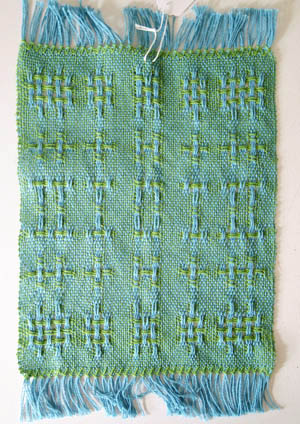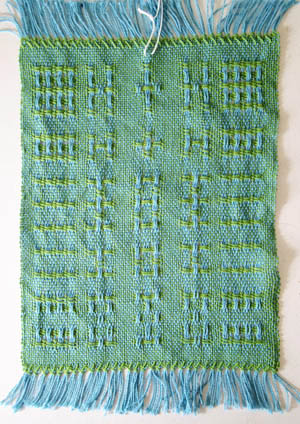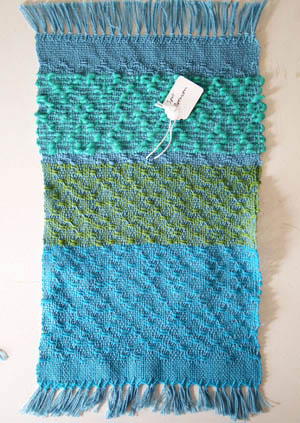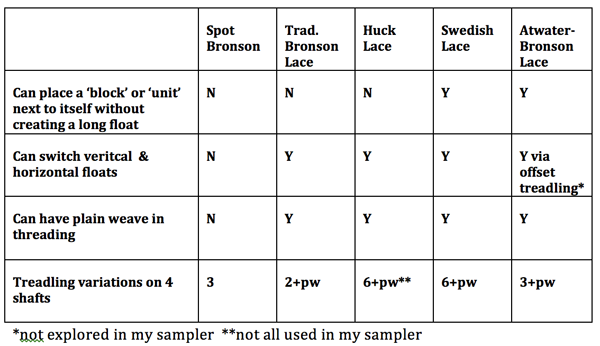The current subject we’re studying in the Certificate of 4-shaft weaving course is lace. Specifically ‘traditional Bronson’ and Atwater-Bronson lace. Whenever I do one of these projects I search all my books and magazines for articles on the subject, and this time I found a fair bit of conflicting information. Checking with the teacher, I learned that the ‘traditional Bronson’ we were learning was a folk version taught by a German weaver who used to teach the class. I’d found a German version of another lace weave, so I’d already noted that there were some variations outside of what my US and UK sources covered.
I produced the sample for Atwater-Bronson the afternoon of the Zoom session on it. I’d already done most of my notes and research, so I decided to put another warp on the loom and do huck and Swedish lace, and spot Bronson sampler using the same profile draft as what I’d designed for Atwater-Bronson.
Of course, that didn’t work. Each of the lace variations has different restrictions and advantages, preventing me from replicating the profile draft exactly. So I aimed, instead, to tweak that profile draft to take both into account… and then I just got creative. Instead of spending a few hours on all the variations, I wound up spending that on each.
Once I had the new warp on the loom I wove a huck lace sampler:

The next was a Swedish lace:

And the last was spot Bronson:

Spot Bronson isn’t a lace, but since it was the base from which Atwater-Bronson was developed, it seemed a good addition to a study of lace. The light green section at the top is barleycorn.
As part of my notes, I made this small chart of the differences between the techniques:

Whether this is strictly right or not… well, I guess I’ll find out when my notes are assessed by the teacher, or if someone corrects me in the comments. The purpose of all this – of the course – is all about building a resource I can return to later, and I think what I’ve done should satisfy that requirement.
It has been interesting to explore the differences between what, to the untrained eye, are weave structures that don’t look very different. The samplers have had me using Fibreworks more, which I’d been a bit intimidated by. I’ve also done a lot of hemstitching, which I’m hating a little less now that I know it off by heart. It’s also clear there is more to learn about lace, but that’s weaving for you – always more to discover!
